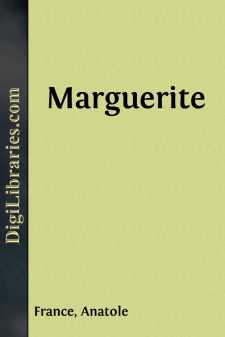Categories
- Antiques & Collectibles 13
- Architecture 36
- Art 48
- Bibles 22
- Biography & Autobiography 813
- Body, Mind & Spirit 142
- Business & Economics 28
- Children's Books 14
- Children's Fiction 11
- Computers 4
- Cooking 94
- Crafts & Hobbies 4
- Drama 346
- Education 46
- Family & Relationships 57
- Fiction 11829
- Games 19
- Gardening 17
- Health & Fitness 34
- History 1377
- House & Home 1
- Humor 147
- Juvenile Fiction 1873
- Juvenile Nonfiction 202
- Language Arts & Disciplines 88
- Law 16
- Literary Collections 686
- Literary Criticism 179
- Mathematics 13
- Medical 41
- Music 40
- Nature 179
- Non-Classifiable 1768
- Performing Arts 7
- Periodicals 1453
- Philosophy 64
- Photography 2
- Poetry 896
- Political Science 203
- Psychology 42
- Reference 154
- Religion 513
- Science 126
- Self-Help 84
- Social Science 81
- Sports & Recreation 34
- Study Aids 3
- Technology & Engineering 59
- Transportation 23
- Travel 463
- True Crime 29
The Red Lily - Complete
by: Anatole France
Description:
Excerpt
The real name of the subject of this preface is Jacques-Anatole Thibault. He was born in Paris, April 16, 1844, the son of a bookseller of the Quai Malaquais, in the shadow of the Institute. He was educated at the College Stanislas and published in 1868 an essay upon Alfred de Vigny. This was followed by two volumes of poetry: 'Les Poemes Dores' (1873), and 'Les Noces Corinthiennes' (1876). With the last mentioned book his reputation became established.
Anatole France belongs to the class of poets known as "Les Parnassiens." Yet a book like 'Les Noces Corinthiennes' ought to be classified among a group of earlier lyrics, inasmuch as it shows to a large degree the influence of Andre Chenier and Alfred de Vigny. France was, and is, also a diligent contributor to many journals and reviews, among others, 'Le Globe, Les Debats, Le Journal Officiel, L'Echo de Paris, La Revue de Famille, and Le Temps'. On the last mentioned journal he succeeded Jules Claretie. He is likewise Librarian to the Senate, and has been a member of the French Academy since 1896.
The above mentioned two volumes of poetry were followed by many works in prose, which we shall notice. France's critical writings are collected in four volumes, under the title, 'La Vie Litteraire' (1888-1892); his political articles in 'Opinions Sociales' (2 vols., 1902). He combines in his style traces of Racine, Voltaire, Flaubert, and Renan, and, indeed, some of his novels, especially 'Thais' (1890), 'Jerome Coignard' (1893), and Lys Rouge (1894), which was crowned by the Academy, are romances of the first rank.
Criticism appears to Anatole France the most recent and possibly the ultimate evolution of literary expression, "admirably suited to a highly civilized society, rich in souvenirs and old traditions.... It proceeds," in his opinion, "from philosophy and history, and demands for its development an absolute intellectual liberty..... It is the last in date of all literary forms, and it will end by absorbing them all .... To be perfectly frank the critic should say: 'Gentlemen, I propose to enlarge upon my own thoughts concerning Shakespeare, Racine, Pascal, Goethe, or any other writer.'"
It is hardly necessary to say much concerning a critic with such pronounced ideas as Anatole France. He gives us, indeed, the full flower of critical Renanism, but so individualized as to become perfection in grace, the extreme flowering of the Latin genius. It is not too much to say that the critical writings of Anatole France recall the Causeries du Lundi, the golden age of Sainte-Beuve!
As a writer of fiction, Anatole France made his debut in 1879 with 'Jocaste', and 'Le Chat Maigre'. Success in this field was yet decidedly doubtful when 'Le Crime de Sylvestre Bonnard' appeared in 1881. It at once established his reputation; 'Sylvestre Bonnard', as 'Le Lys Rouge' later, was crowned by the French Academy. These novels are replete with fine irony, benevolent scepticism and piquant turns, and will survive the greater part of romances now read in France. The list of Anatole France's works in fiction is a large one. The titles of nearly all of them, arranged in chronological order, are as follows: 'Les Desirs de Jean Seyvien (1882); Abeille (1883); Le Livre de mon Ami (1885); Nos Enfants (1886); Balthazar (1889); Thais (1890); L'Etui de Naire (1892); Jerome Coignard, and La Rotisserie de la Reine Pedanque (1893); and Histoire Contemporaine (1897-1900), the latter consisting of four separate works: 'L'Orme du Mail, Le Mannequin d'Osier, L'Anneau d'Amethyste, and Monsieur Bergeret a Paris'....












